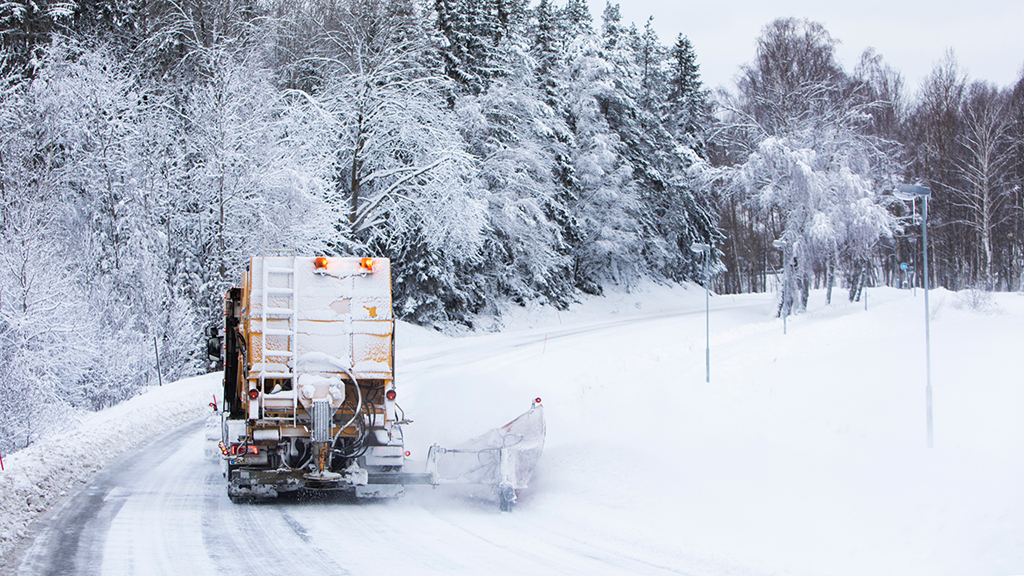
Svevia Tests Circular Salt for Winter Road Maintenance
In a pilot project, Svevia will use circular salt for de-icing within the Örnsköldsvik maintenance area this winter. The project aims to evaluate how methods and technical equipment in winter road maintenance need to be developed to replace traditionally imported salt with more locally produced circular salt.
Salting is a proven method for de-icing. The salt used is naturally created and imported from Europe, where it is mined in salt mines or extracted from sea salt. Although coarse in structure, it is common sodium chloride (NaCl), the same type of salt used in cooking. Circular salt is a by-product that can be extracted from, among other things, fly ash and the production of fertilizers. It has the same chemical composition as natural salt but is purer and finer in structure.
Last year, a study was conducted in Sweden to identify the possibility of using circular salt in winter road maintenance. Similar studies have been conducted in Norway, among other places.
Andreas Bäckström, business developer at Svevia, sees several positive opportunities with starting to use circular salt for road maintenance.
“With circularity, a more efficient and long-term sustainable resource use is created, long and environmentally burdensome transports can be reduced, as well as the dependence on importing salt from Europe. Instead, it can be produced more locally, and Sweden could essentially become self-sufficient in a critical societal commodity,” says Andreas Bäckström.
The study showed that before circular salt can become commonplace in the road industry, more pilot projects need to be carried out to ensure that the circular salt functions the same on the road and that the technical equipment works throughout the logistics chain.
“Winter road maintenance is a traditional industry where methods and equipment have been optimized and developed over a long time. For example, a coarse salt grain can drill down through ice where a fine salt grain rather lays on top without penetrating and perforating the ice. We have also seen that our equipment needs to be developed. One example is that the fine salt weighs less and therefore has a different spread when we use salt spreaders developed for coarse salt; it also tends to clump together in certain types of weather.”
In road maintenance, salt is also used for dust binding on gravel roads. In the long term, circular salt will also be evaluated for dust binding.
The studies of circular salt are carried out in broad collaboration with representatives from machine manufacturers, contractors, road maintainers, product suppliers, and procurers.
Svevia AB is the project coordinator and main project partner.
Participating parties are: Nordic Salts AB, and Luleå University of Technology
Project management: ViaPM AB
Other stakeholders participating in the project are the Swedish Transport Administration, InfraSweden, Peab, Skanska, Terranor, Epoke, Friggeråkers workshops, NIRA Dynamics AB, Cinis Fertilizer, Aebi Smith, Consalt, Industrial Maintenance, BM System
Text: Svevia
Photo: Markus Marcetic
